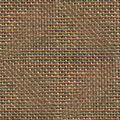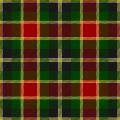Vegetable flannel
Vegetable flannel is a type of flannel using fibres from the Scots pine, or pinus sylvestris, rather than traditional woollen fibres.[1] It is described as having a hemp like appearance, but with a tighter, softer texture.[2] In addition to this, the term can also describe coarse linen used for underclothing.[3]
Manufacture
Invented in the early 19th century by L. Léopold Lairitz of Germany, the manufacture of vegetable flannel became a Black Forest industry due to the wide availability of the pines there which provided the raw materials.[4][5] The raw fibre, called waldwolle (forest wool), and the pine oil were separated, and then the waldwolle was spun into yarn or thread, and either woven or knitted.[5]
By 1900, vegetable flannel was mainly woven at Breslau, which at the time was located in Germany.[2]
Properties
Vegetable flannel was promoted as an hypoallergenic option for those who could not wear wool, and was thought to be particularly good for rheumatism and neuralgia.[4][5] In the nineteenth century, this was attributed to the tannins and resins present in the fibre, and "formic acid, which creates a gentle and constant excitement of the skin."[5] Another contemporary article claimed that vegetable flannel regulated the release of phosphorus and other elements from the invalid's body.[4] In 1900, vegetable flannel was widely used for blankets in German hospitals, prisons and barracks as it was thought not to harbour pests and vermin.[2]
References
^ "Vegetable flannel". Webster's 1913 Dictionary. Webster. Retrieved 18 August 2014..mw-parser-output cite.citation{font-style:inherit}.mw-parser-output .citation q{quotes:"""""""'""'"}.mw-parser-output .citation .cs1-lock-free a{background:url("//upload.wikimedia.org/wikipedia/commons/thumb/6/65/Lock-green.svg/9px-Lock-green.svg.png")no-repeat;background-position:right .1em center}.mw-parser-output .citation .cs1-lock-limited a,.mw-parser-output .citation .cs1-lock-registration a{background:url("//upload.wikimedia.org/wikipedia/commons/thumb/d/d6/Lock-gray-alt-2.svg/9px-Lock-gray-alt-2.svg.png")no-repeat;background-position:right .1em center}.mw-parser-output .citation .cs1-lock-subscription a{background:url("//upload.wikimedia.org/wikipedia/commons/thumb/a/aa/Lock-red-alt-2.svg/9px-Lock-red-alt-2.svg.png")no-repeat;background-position:right .1em center}.mw-parser-output .cs1-subscription,.mw-parser-output .cs1-registration{color:#555}.mw-parser-output .cs1-subscription span,.mw-parser-output .cs1-registration span{border-bottom:1px dotted;cursor:help}.mw-parser-output .cs1-ws-icon a{background:url("//upload.wikimedia.org/wikipedia/commons/thumb/4/4c/Wikisource-logo.svg/12px-Wikisource-logo.svg.png")no-repeat;background-position:right .1em center}.mw-parser-output code.cs1-code{color:inherit;background:inherit;border:inherit;padding:inherit}.mw-parser-output .cs1-hidden-error{display:none;font-size:100%}.mw-parser-output .cs1-visible-error{font-size:100%}.mw-parser-output .cs1-maint{display:none;color:#33aa33;margin-left:0.3em}.mw-parser-output .cs1-subscription,.mw-parser-output .cs1-registration,.mw-parser-output .cs1-format{font-size:95%}.mw-parser-output .cs1-kern-left,.mw-parser-output .cs1-kern-wl-left{padding-left:0.2em}.mw-parser-output .cs1-kern-right,.mw-parser-output .cs1-kern-wl-right{padding-right:0.2em}
^ abc Cole, George S. (1900). Cole's Encyclopedia of Dry Goods. Root Newspaper Association. p. 566.
^ Tortora, Phyllis G.; Johnson, Ingrid (2014). The Fairchild books dictionary of textiles (8th edition. ed.). New York: Fairchild Books. ISBN 9781609015350.
^ abc "Vegetable Flannel". Frank Leslie's Pleasant Hours: 256. 1869.
^ abcd "Manufactures: Vegetable Flannel". The Journal of the Society of Arts: 281. 10 March 1865.
This article about textiles is a stub. You can help Wikipedia by expanding it. |


